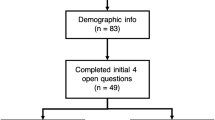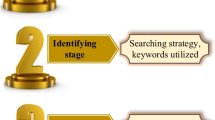Abstract
When someone looses one type of sensory input, s/he may compensate by using the sensory information conveyed by other senses. To verify whether loosing a sense or two has consequences on a spared sensory modality, namely touch, and whether these consequences depend on the type of sensory loss, we investigated the effects of deafness and blindness on temporal and spatial tactile tasks in deaf, blind and deaf-blind people. Deaf and deaf-blind people performed the spatial tactile task better than the temporal one, while blind and controls showed the opposite pattern. Deaf and deaf-blind participants were impaired in temporal discrimination as compared to controls, while deaf-blind individuals outperformed blind participants in the spatial tactile task. Overall, sensory-deprived participants did not show an enhanced tactile performance. We speculate that discriminative touch is not so relevant in humans, while social touch is. Probably, more complex tactile tasks would have revealed an increased performance in sensory-deprived people.


Similar content being viewed by others
Notes
0 = normal vision, 1 = residual vision between 2/10 and 3/10 dioptres and/or residual binocular perimeter between 50 % and 60 %; 2 = residual vision between 1/10 and 2/10 dioptres and/or residual binocular perimeter between 30 and 50 %; 3 = residual vision <1/10 dioptres and/or residual binocular perimeter <10 %; 5 = complete blindness.
References
Alary F, Duquette M, Goldstein R, Chapman CE, Voss P, Buissonière-Ariza La, Lepore F (2009) Tactile acuity in the blind: a closer look reveals superiority over the sighted in some but not all cutaneous tasks. Neuropsychologia 47:2037–2043
Arnold P, Heiron K (2002) Tactile memory of deaf-blind adults on four tasks. Scand J Psychol 43:73–79
Baayen RH, Davidson DJ, Bates DM (2008) Mixed-effects modeling with crossed random effects for subjects and items. J Mem Lang 59:390–412
Bates D, Maechler M, Bolker B, Walker S (2014) lme4: linear mixed-effects models using Eigen and S4. R package version 1.1-5, 2014. http://CRAN.R-project.org/package=lme4
Bolognini N, Papagno C, Moroni D, Maravita A (2010) Tactile temporal processing in the auditory cortex. J Cogn Neurosci 22:1201–1211
Bolognini N, Cecchetto C, Geraci C, Maravita A, Pascual-Leone A, Papagno C (2012) Hearing shapes our perception of time: temporal discrimination of tactile stimuli in deaf people. J Cogn Neurosci 24:276–286
Bolognini N, Convento S, Rossetti A, Merabet LB (2013) Multisensory processing after a brain damage: clues on post-injury crossmodal plasticity from neuropsychology. Neurosci Biobehav Rev 37:269–278
Calvert GA, Thesen T (2004) Multisensory integration: methodological approaches and emerging principles in the human brain. J Physiol 98:191–205
Carvill S (2001) Sensory impairment, intellectual disability and psychiatry. J Intellect Disabil Res 45:467–483
Cattaneo Z, Lega C, Cecchetto C, Papagno C (2014) Auditory deprivation affects biases of visuospatial attention as measured by line bisection. Exp Brain Res 232:2767–2773
Cattaneo Z, Cecchetto C, Papagno C (2015) Deaf individuals show a leftward bias in numerical bisection. Perception. doi:10.1177/0301006615596915
Cohen J (1973) Eta-squared and partial eta-squared in fixed factor ANOVA designs. Educ Psychol Meas 33:107–112
Cuevas I, Plaza P, Rombaux P, De Volder AG, Renier L (2009) Odour discrimination and identification are improved in early blindness. Neuropsychologia 47:3079–3083
De Rosario-Martinez H (2015) phia: post-hoc interaction analysis. R package version 0.2-0. http://CRAN.R-project.org/package=phia
Dunbar RIM (2010) The social role of touch in humans and primates: behavioural function and neurobiological mechanisms. Neurosci Behav Rev 34:260–268
Dye MW, Hauser PC, Bavelier D (2009) Is visual selective attention in deaf individuals enhanced or deficient? The case of the useful field of view. PLoS One 4:e5640
Gallace A, Spence C (2010) The science of interpersonal touch: an overview. Neurosci Biobehav Rev 34:246–259
Gallace A, Spence C (2014) In touch with the future: the sense of touch from cognitive neuroscience to virtual reality. Oxford University Press, Oxford
Gelman A, Hill J (2006) Data analysis using regression and multilevel/hierarchical models. Cambridge University Press, Cambridge
Grant AC, Thiagarajah MC, Sathian K (2000) Tactile perception in blind Braille readers: a psychophysical study of acuity and hyperacuity using gratings and dot patterns. Percept Psychophys 62:301–312
Green D, Swets J (1966) Signal detection theory and psychophysics. Wiley, New York
Guest S, Mehrabyan A, Ackerley R, McGlone F, Phillips N, Essick G (2014) Tactile experience does not ameliorate age-related reductions in sensory function. Exp Aging Res 40:81–106
Hauthal N, Neumann MF, Schweinberger SR (2012) Attentional spread in deaf and hearing participants: face and object distractor processing under perceptual load. Atten Percept Psychophys 74:1312–1320
Hauthal N, Sandmann P, Debener S, Thorne JD (2013) Visual movement perception in deaf and hearing individuals. Adv Cogn Psychol 9(2):53
Heimler B, Pavani F (2014) Response speed advantage for vision does not extend to touch in early deaf adults. Exp Brain Res 232:1335–1341
Heimler B, Weisz N, Collignon O (2014) Revisiting the adaptive and maladaptive effects of crossmodal plasticity. Neuroscience 283:44–63
Heimler B, van Zoest W, Baruffaldi F, Donk M, Rinaldi P, Caselli MC, Pavani F (2015) Finding the balance between capture and control: oculomotor selection in early deaf adults. Brain Cogn 96:12–27
Heming JE, Brown LN (2005) Sensory temporal processing in adults with early hearing loss. Brain Cogn 59:173–182
Hertenstein MJ (2002) Touch: its communicative functions in infancy. Hum Dev 45:70–94
Janssen MJ, Nota S, Eling PATM, Ruijssenaars WAJJM (2007) The advantage of encoding tactile information for a woman with congenital deaf-blindness. J Vis Imp Blind 101:653–656
Kenneth S, Taylor-Clarke M, Haggard P (2001) Noninformative vision improves the spatial resolution in humans. Curr Biol 11:1188–1191
Lejeune F, Berne-Audéoud F, Marcus L, Debillon T, Gentaz E (2014) The effect of postnatal age on the early tactile manual abilities of preterm infants. Early Hum Dev 90:259–264
Levänen S, Hamdorf D (2001) Feeling vibrations: enhanced tactile sensitivity in congenitally deaf humans. Neurosci Lett 301:75–77
Lewald J (2013) Exceptional ability of blind humans to hear sound motion: implications for the emergence of auditory space. Neuropsychologia 51:181–186
Mast F, Frings C, Spence C (2014) Response interference in touch, vision, and crossmodally: beyond the spatial dimension. Exp Brain Res 232:2325–2336
Merabet LB, Pascual-Leone A (2010) Neural reorganization following sensory loss: the opportunity of change. Nat Rev Neurosci 11:44–52
Neville H, Bavelier D (2002) Human brain plasticity: evidence from sensory deprivation and altered language experience. Prog Brain Res 138:177–188
Norman JF, Bartholomew AN (2011) Blindness enhances tactile acuity and haptic 3-D shape discrimination. Atten Percept Psychophys 73:2323–2331
Norman JF, Crabtree CE, Norman HF, Moncrief BK, Hermann M, Kapley N (2006) Aging and the visual, haptic, and cross-modal perception of natural object shape. Perception 35:1383–1395
Oldfield RC (1971) The assessment and analysis of handedness: the Edinburgh inventory. Neuropsychologia 9:97–113
Pavani F, Bottari D (2012) Visual abilities in individuals with profound deafness: a critical review. In: Murray MM, Wallace M (eds) Frontiers in the neural bases of multisensory processes. CRC Press, Boca Raton, pp 423–447
Proksch J, Bavelier D (2002) Changes in the spatial distribution of visual attention after early deafness. J Cogn Neurosci 14:687–701
Ragert P, Schmidt A, Altenmüller E, Dinse HR (2004) Superior tactile performance and learning in professional pianists: evidence for meta-plasticity in musicians. Eur J Neurosci 19:473–478
R Developmental Core Team (2013) A language and environment for statistical computing. R Foundation for Statistical Computing, Vienna. http://www.R-project.org/
Reuter EM, Voelcker-Rehage C, Vieluf S, Godde B (2012) Touch perception throughout working life: effects of age and expertise. Exp Brain Res 216:287–297
Röder B, Rösler F, Spence C (2004) Early vision impairs tactile perception in the blind. Curr Biol 14:121–124
Stevens AA, Weaver K (2005) Auditory perceptual consolidation in early-onset blindness. Neuropsychologia 43:1901–1910
Stilla R, Hanna R, Hu X, Mariola E, Deshpande G, Sathian K (2008) Neural processing underlying tactile microspatial discrimination in the blind: a functional magnetic resonance imaging study. J Vis 8(13):1–19
Van Boven RW, Hamilton RH, Kauffman T, Keenan JP, Pascual-Leone A (2000) Tactile spatial resolution in blind Braille readers. Neurology 54:2230–2236
Van der Lubbe RHJ, Van Mierlo CM, Postma A (2009) The involvement of occipital cortex in the early blind in auditory and tactile duration discrimination tasks. J Cogn Neurosci 22:1541–1556
Van Dijk R, Kappers AML, Postma A (2013) Superior spatial touch: improved haptic orientation processing in deaf individuals. Exp Brain Res 230:283–289
Voisin J, Lamarre Y, Chapman CE (2002) Haptic discrimination of object shapes in humans: contribution of cutaneous and proprioceptive inputs. Exp Brain Res 145:251–260
Voss P, Lassonde M, Gougoux F, Fortin M, Guillemot JP, Lepore F (2004) Early-and late-onset blind individuals show supra-normal auditory abilities in far-space. Curr Biol 14:1734–1738
Wan CY, Wood AG, Reutens DC, Wilson SJ (2010) Congenital blindness leads to enhanced vibrotactile perception. Neuropsychologia 48:631–635
Acknowledgments
The authors are grateful to La Lega del Filo d’Oro for their help in recruiting and testing deaf-blind participants. They are also grateful to Martina Gerosa for helping in recruiting deaf participants and to Maria Rosaria de Filippis from the Unione Italiana Ciechi di Milano.
Author information
Authors and Affiliations
Corresponding author
Rights and permissions
About this article
Cite this article
Papagno, C., Cecchetto, C., Pisoni, A. et al. Deaf, blind or deaf-blind: Is touch enhanced?. Exp Brain Res 234, 627–636 (2016). https://doi.org/10.1007/s00221-015-4488-1
Received:
Accepted:
Published:
Issue Date:
DOI: https://doi.org/10.1007/s00221-015-4488-1




